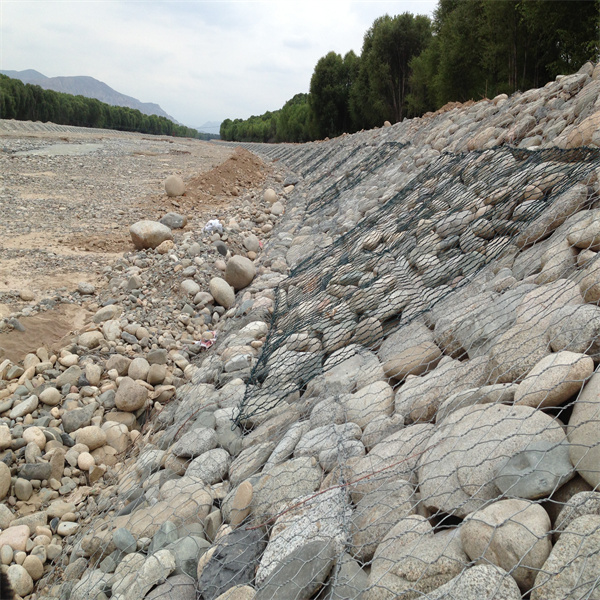Nov . 09, 2024 20:15 Back to list
Gabion Headwalls for Effective Erosion Control and Sustainable Drainage Solutions
The Importance of Gabion Headwalls in Erosion Control and Infrastructure Stability
In the realm of civil engineering and environmental conservation, gabion structures have gained significant attention for their effectiveness in managing water flow, controlling erosion, and enhancing the stability of various infrastructures. One specific application of gabions that holds particular importance is the gabion headwall. This article explores the concept of gabion headwalls, their construction, benefits, and applications.
What is a Gabion Headwall?
A gabion headwall is a retaining structure typically constructed at the inlet or outlet of a drainage system, such as a culvert or stormwater channel. It is made of wire mesh cages filled with stones or gravel, creating a robust barrier that withstands erosive forces. The primary purpose of a headwall is to provide a stable transition between the drainage system and the receiving environment, reducing the risk of erosion caused by water discharge.
Construction of Gabion Headwalls
The construction of a gabion headwall involves several critical steps
. Initially, a site is selected based on the hydrological analysis of the area to ensure that the structure will adequately address water flow issues. Once the site is chosen, engineers design the headwall by determining its size, shape, and the materials required.The next step involves assembling gabion baskets from durable wire mesh. These baskets are then filled with appropriately sized stones or gravel collected from local quarries or riverbeds. The filled baskets are stacked to the desired height and arranged to create a labyrinth of gabions that promote stability and integrity under heavy water flow.
After the baskets are arranged, they are often connected with steel ties or additional wire to ensure they remain intact during periods of high flow. The headwall is typically graded around its perimeter to allow for natural drainage, further minimizing the risk of erosion.
Benefits of Gabion Headwalls
1. Erosion Control One of the most significant advantages of gabion headwalls is their effectiveness in controlling erosion. By dissipating the energy of flowing water, they protect soil and surrounding vegetation from being washed away, particularly in areas prone to flooding or heavy rainfall.
gabion headwall

2. Cost-Effectiveness Gabion structures are relatively inexpensive compared to traditional concrete headwalls. The materials used are often locally sourced, which reduces transportation costs. Additionally, the simplicity of construction minimizes labor costs, making them an economically viable solution for many projects.
3. Environmental Compatibility Gabions can blend seamlessly into their natural surroundings, promoting ecological benefits. The use of natural stone allows for vegetation to grow between the rocks, providing habitat for wildlife and enhancing biodiversity.
4. Durability and Longevity Gabion headwalls are designed to withstand harsh conditions and have a long lifespan. The materials used in their construction can survive severe weather conditions, making them a reliable choice for areas with extreme climates.
5. Flexibility and Adaptability Gabion structures can be easily modified or extended to accommodate changes in design or landscape. This flexibility makes them particularly useful in dynamic environments where conditions may change over time.
Applications of Gabion Headwalls
Gabion headwalls are used in a variety of applications across different sectors. They are commonly found in road construction projects where culverts require robust protection against erosion. In urban development, these structures are essential for stormwater management systems, ensuring that excess water is channeled safely without damaging the surrounding area.
Additionally, gabion headwalls are increasingly used in environmental restoration projects, particularly in riverbank stabilization. By creating barriers that absorb and redirect water flow, these structures help restore natural habitats that may have been impacted by urbanization or industrial activity.
Conclusion
In conclusion, gabion headwalls represent an innovative and effective solution for managing water flow and controlling erosion. Their cost-effectiveness, environmental compatibility, and adaptability make them an attractive option for engineers and project managers alike. As communities continue to face the challenges posed by climate change and increasing urbanization, the role of gabion headwalls in infrastructure and environmental protection will undoubtedly become even more critical. Embracing such sustainable practices is essential for building resilient communities and preserving our natural landscapes for future generations.
-
Wire Mesh Thickness Impact on Gabion Wall Load Bearing
NewsAug.12,2025
-
Ultimate Guide to Hexagonal Gabion Box
NewsAug.12,2025
-
Types of Rocks for Gabion Baskets Durability and Aesthetics
NewsAug.12,2025
-
Standard Gabion Box Sizes and Their Industrial Applications
NewsAug.12,2025
-
Easy Guide to Building Garden Gabion Cages at Home
NewsAug.12,2025
-
Drainage Solutions for Gabion Mesh Structures
NewsAug.12,2025
-
Visualizing Gabion 3D Integration in Urban Landscapes with Rendering
NewsJul.23,2025






